The early history of the Baby Hammerless revolver is a bit murky, but the variants of the gun are well documented. My original intent was simply to document the Kolb specimen I collected, but there is so little information about the Baby Hammerless on the internet that I thought I should at least record the various manufacturers and types, and provide what history I can find.
Foehl & Weeks
Charles G.W. Foehl engaged in the business of making firearms in Philadelphia for a number of years. He was born in the state of Würtemberg, Germany in September of 1840, and immigrated to the United States in 1859. Foehl was apprenticed to Philadelphia gunsmith John Wurfflein, and is said to have worked for Henry Deringer, Jr. before the U.S. Civil War. After the war Foehl worked for the Deringer Rifle and Pistol Works, which was owned by a great-grandson of Henry Deringer, Jr. The firm made cartridge firearms, and its First Model Deringer Revolver utilized some features from Foehl’s first firearms patent, U.S. patent #139,461. The firm also manufactured single shot rifles based on Foehl’s next two patents, which were variants of the Martini action rifle. Foehl died on 4 October 1913, at the age of 73.
In 1889 Foehl formed a company with a Philadelphia machinist, Charles A Weeks, to make guns based on Foehl’s patents. They called their company the Foehl & Weeks Firearms Manufacturing Company. In the next few years, they took out several patents together for various features of the revolvers they produced, including U.S. patents #447,219, #468,243, and #471,112. Their revolvers were mostly top-break, in .32 and .38 caliber, some with a grip safety on the front of the grip, some with a safety behind the trigger guard. They were usually marked “THE FOEHL & WEEKS F. A. MFG. CO.” Some were marked “PERFECT” on the topstrap.
Foehl & Weeks may have never actually manufactured the Baby Hammerless under their own name, since the company went bankrupt in the financial panic of 1893, and while they continued to be listed in city directories until 1896, there are no Baby Hammerless other than prototypes that can be definitively traced to this period. The two patent dates on the Baby Hammerless are February 2, 1892 and February 4, 1896. The 1892 patent applied to the Baby Hammerless Revolver was Foehl & Weeks’ patent #468,243, and the 1896 patent was Foehl’s patent #554,058. Frank Sellers, in his book Baby Hammerless Pistols, estimates that the entire production of all types of Foehl & Weeks revolvers was no more than a few thousand.
The Columbian Firearms Manufacturing Company
Columbian was probably formed in 1893, soon after the financial difficulties of Foehl & Weeks became apparent, and almost certainly named in honor of the World’s Columbian Exhibition, held in Chicago in 1893. The president of Columbian Firearms was Henry Ruhland, a Philadelphia financier who just happened to be the bankruptcy referee for Foehl & Weeks (the equivalent of a modern bankruptcy judge). Foehl managed the company, which occupied the same factory that had been previously used by Foehl & Weeks. Essentially, Ruhland and Foehl created a new legal entity which could continue producing firearms using Foehl’s patents, without being liable for Foehl & Weeks’ debts. Later, a half interest in two of Foehl’s patents (#530,759 of 1894 and #554,058 of 1896, the latter of which was on the Baby Hammerless) was assigned to Henry Ruhland. The firm manufactured top-break revolvers nearly identical to those manufactured by Foehl & Weeks. Some were marked “COLUMBIAN F. A. MFG. CO. PHILA. PA. U.S.A./ PAT. DEC. 11.1894 PAT.PDG.” Others were marked “COLUMBIAN AUTOMATIC PAT.PDG./ NEW YORK ARMS CO.”
The Baby Hammerless was probably first manufactured by Columbian, though some knowledgeable collectors maintain that all Baby Hammerless models were manufactured after Henry Kolb took over. However, there remains the fact that the early Baby Hammerless had hard rubber grips with vines or scrollwork in the upper circle, whereas Kolb’s revolvers all had a K in the circle. I can’t help but think that if Kolb had made them all, they would all display Kolb’s K. Columbian apparently went out of business in 1897 or 1898, and their guns are rather scarce.
Henry M. Kolb
Henry M. Kolb was born 16 January 1861 in the Würtemburg state of southern Germany, and was first listed in the Philadelphia city directory in 1895 as a machinist. He claimed in his ads that he founded his firearms company in 1897, which was also the last year the Columbian Firearms Company was listed in the city directory. It is known that Kolb opened a model shop in 1899 and a machinery business in 1900. There is no evidence he ever occupied the address of the old Foehl & Weeks/Columbian com- panies, nor is there any record that he purchased their machinery, though it is possible that he may have done so. Here lies the root of the question as to who made the Baby Hammerless. Other than the hard rubber grips, there are no differences between the Columbian and Kolb Baby Hammerless revolvers–they were probably made with the same equipment.
Charles Foehl was also associated with Henry Kolb–they took out several patents together after Kolb entered the firearms business, though none of them were related to the Baby Hammerless. Kolb himself took out two patents in 1910 that relate directly to the Baby Hammerless revolver. The first was #954,190, for a “firing-pin for hammers for firearms,” and the second was #954,191, for a means of mounting and locking the cylinder.
Kolb’s business, which apparetly was simply called Henry M. Kolb, became Henry M. Kolb & Company in 1910, and this change may mark the occasion of Reginald F. Sedgley becoming manager of the firm, though this is an inference with no hard data to back it up.
R. F. Sedgley, Incorporated
Reginald Sedgley was born in England on 3 September 1876 and arrived in the U.S. on 9 May 1894. He is believed to have worked in Philadelphia as a machinist as early as 1896. There is no documentation to show exactly when he worked for Kolb, but it is probable that he began working for him before 1910, several years before Charles Foehl’s death. Sedgley bought out Kolb’s business in 1916, and Kolb returned to the machine shop business by 1917. Sedgley marked his catalogues “R.F. Sedgley, Inc., Established 1897.” Having bought the company, he adopted Kolb’s founding date. While it is possible that Sedgley worked for Kolb as early as 1897, Sellers does not consider it likely.
Sedgley was granted two patents for improvements to the Baby Hammerless. The first, #1,216,001, was granted on 13 February 1917 for a new combination mainspring. The second, #1,236,608, was granted 14 August 1917 for a cylinder ejection system. He was also well known for custom gunsmith work, converting 1903 Springfields into sporting guns and sniper rifles, and for his flare gun. Sedgley died on 30 March 1938.
Variants of the Baby Hammerless Revolver
I despair of making a complete list of Baby Hammerless variations, because the sheer number of them is overwhelming and sometimes confusing. For the most complete coverage available please see Frank Sellers’ book, Baby Hammerless Revolvers. I will cover the high points here. Serial numbers for the Baby Hammerless revolvers are usually found stamped into the frame under the right grip plate.
-
 |
|
 |
|
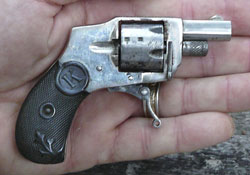 |
|
|
|
Kolb First Model Baby Hammerless .22 |
|
|
|
Small Frame First Model: .22 caliber short, 6-shot. Birdshead grips in hard rubber: the Columbian with a vine pattern in the top circle, the Kolb with a K in the top circle. Approximately 25% had pearl grips, which were indistinguishable between makes. Nickel was the standard finish, but 10-20% were blued. There was a headspace adjustment screw on the front of frame just beneath the cylinder pin. The Cylinder pin catch was mounted in the frame. Mainspring adjustment screw on front of grip strap. Length was 4 inches overall, with a 1-5/16 inch barrel. Marked: PAT. FEB.2.92-FEB.4.96 / BABY HAMMERLESS / PATENTS PENDING. Three different hammers were installed, which can only be distinguished by disassembling the guns. Probably over 50,000 of these were produced. Duplicate serial numbers are common. Some of the late production first model small frame guns were marked NEW MODEL on the top strap and on the box–according to Frank Sellers this indicates that it had “the last type of hammer, with Kolb’s patented pivoting firing pin.” The same marking was used on the early 1910 small frame revolvers.
-
 |
|
 |
 |
|
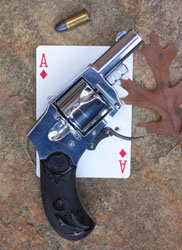 |
|
|
|
Large Frame Western Arms .32 |
|
|
|
Large Frame First Model: .32 caliber S&W short, 5-shot; or .22 caliber long, 8-shot. There are lots of variations. The .32 caliber guns were made with and without loading gates, and the .22 caliber were made with and without loading slots. Birdshead grips in hard rubber: the Columbian with a vine pattern in the top circle, the Kolb with a K in the top circle. The Cylinder pin catch was mounted in the frame. Nickel was the standard finish, but 10% were blued. Length was 5-1/4 inches overall, with a 1-3/4 inch barrel. Markings include: PAT. FEB.2.92-FEB.4.96 / BABY HAMMERLESS / PHILA. PA.; or PAT. FEB.2.92-FEB.4.96 / WESTERN ARMS CO. / PATENTS PENDING; or PAT. FEB.2.92-FEB.4.96 / SPECIAL / PATENTS PENDING. Total production of all types was probably about 12,500, only about 2,500 of which were in .22. The lowest production was of the .22 with no loading slot (about 500), followed by the Special and the .32 with the loading gate (about 1000 each). Those marked Western Arms were the most common, with approximately 3,000 made.
- Small Frame Model 1910: .22 caliber short, 6-shot. Also known as the New Model. The frame was slightly larger than the First Model. The grip was redesigned with a larger, square butt, and the headspace adjustment screw was eliminated. The cylinder pin catch was mounted in the pin itself, rather than in the frame, and it had a larger head. The trigger was lengthened and the knob on the end was removed. Early issue guns were marked: PAT. FEB.2.92-FEB.4.96 / BABY HAMMERLESS / NEW MODEL, with PAT’s PENDING on the butt. Later guns were marked: PAT. FEB.2.92-FEB.4.96 / BABY HAMMERLESS / MODEL 1910, with PAT’s PENDING on the butt. Later still, the gun carried Kolb’s 1910 patent date: FEB.4.96–APR.5.10 / BABY HAMMERLESS / MODEL 1910. The last and most common markings eliminated the earlier patent date: PATS.APRIL 5.10 / BABY HAMMERLESS / MODEL 1910. Over 50,000 of these guns are estimated to have been made.
- Large Frame Model 1910: .32 caliber S&W short, 5-shot; or .22 caliber long, 8-shot. The frame was the same size as the First Model, but the grip was enlarged and had a square butt. Various internal changes were made to the hammer and trigger design over the years of production, but I will not detail them here. The cylinder stops were redesigned. The cylinder pin catch was mounted in the pin itself, and it had a larger head. There are four different markings. The earliest guns were marked: PAT. FEB.2.92-FEB.4.96 / BABY HAMMERLESS / MODEL 1910; some have PAT’S PENDING on the butt and some do not. Later guns carried Kolb’s 1910 patent date: FEB.4.96–APR.5.10 / BABY HAMMERLESS / MODEL 1910. The next markings eliminated the earlier patent date: PATS.APRIL 5.10 / BABY HAMMERLESS / MODEL 1910. Finally, the Konqueror model, which had a two-inch barrel, was marked: PATS.APRIL 5.10 / KONQUEROR / MODEL 1910. Only about 6,000 total of the Large Frame Model 1910 guns are estimated to have been made, the Konqueror model being the most rare (100 estimated).
- Small Frame “Transition” Model, first type: .22 caliber short, 6-shot. The primary distinguishing feature of the “Transition” model Baby Hammerless is the lack of a mainspring adjustment screw on the front of the gripstrap, which indicates that the new style mainspring was in use. The first type retained the cylinder pin catch that was built into the cylinder pin. The grips all had square butts. Some of these guns had the K on the hard rubber grips, and some had the S. A few of the S grips had four jewels inset, to appeal to the ladies. The earliest of these pistols (probably the first few thousand) were marked just like the previous model: PATS.APRIL 5.10 / BABY HAMMERLESS / MODEL 1910. Later they were marked: PATS.APRIL 5.10 / BABY HAMMERLESS / MODEL 1916. And later still they were marked: PAT 4.5.10-2.13.17 / BABY HAMMERLESS / MODEL 1918; or PAT 4.5.10-2.13.17 / BABY HAMMERLESS / MODEL 1920 U.S.A. The ones marked 1916 and 1920 are the most common. Approximately 3,000 were marked 1910; 20,000 were marked 1916; 2,000 were marked 1918; and 25,000 were marked 1920.
-
 |
|
 |
|
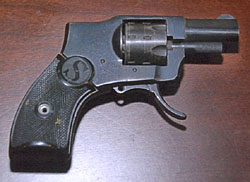 |
|
|
|
Blued 1920 Sedgley w/ Pull Release |
|
|
|
Small Frame “Transition” Model, pull release: .22 caliber short, 6-shot. The distinguishing feature of this model was the cylinder pin pull release, eliminating the cylinder pin catch. A rare few of these guns had a threaded cylinder pin. As best I can tell, all these guns were made by Sedgley and had the hard rubber S grips or pearl grips with a square butt. The earliest of these guns were marked just like the last of the first type: PAT 4.5.10-2.13.17 / BABY HAMMERLESS / MODEL 1920 U.S.A. As the years rolled by, the markings stayed the same, but the model dates changed: 1921, 1922, and 1924. Approximately 1,000 were made with the 1920 date; 15,000 with the 1921 date; 7,000 with the 1922 date; and 1,000 with the 1924 date.
- Small Frame Ejector Model: .22 caliber long, 6-shot. Sedgley had designed a cylinder with a built in ejector, which he had patented in 1917, but apparently didn’t begin installing until about 1924, possibly because it required a redesign of the frame. The cylinder didn’t swing out, but had a pull release, and considerably simplified cartridge ejection. This was the first small frame Baby Hammerless to be chambered for the .22 long cartridge. The cylinder was lengthened slightly to 7/8 inch, the frame was modified accordingly, and the barrel was shortened to keep the overall length of the gun the same. These guns were all made by Sedgley and had square butts with the S in the circle at the top of the hard rubber grips. Later models had a double loop mainspring, but were externally identical. The guns were marked with three patent dates, as follows: PATENTED / 4.5.10-2.13.17-8.14 .17 / BABY HAMMERLESS / EJECTOR MODEL / 1924 U.S.A. Later markings were identical except for the model date: 1927, 1928, 1929, 1930. Approximately 3,000 were made with the 1924 date; 7,000 with the 1927 date; 5,000 with the 1928 date; 10,000 with the 1929 date; and 2,000 with the 1930 date.
- New Baby Revolvers: .22 caliber short, 6-shot. The New Baby top-break revolvers were all manufactured by Kolb, based on Foehl’s patents. They show many resemblances to the early large frame Foehl & Weeks top-break revolvers. The original top latch looks a lot like an old Smith & Wesson or Iver Johnson, but was actually based on a Foehl patent. About 90% of them were nickel plated. I haven’t been able to determine a date for the beginning of manufacture, but the last model was dated 1911, and its manufacture probably continued for several years. Since production estimates for the first three models together only total about 6,500, I suggest production began sometime between 1900 and 1905, though it certainly could have been earlier. I can’t help but see Foehl’s influence in the New Baby. Foehl was still alive during most of this gun’s production, as he didn’t die until 1913. There are four distinct “models,” though only the last has an official model designation.
-
 |
 |
 |
 |
 |
|
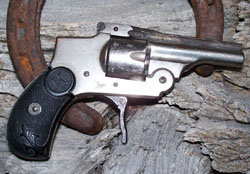 |
|
|
|
Second Model Kolb “New Baby” |
|
|
|
First Model New Baby: The first model had a cylinder retaining latch based on Foehl’s patent #530,759 of 1894. It is distinguished by a small button on the left-side forward portion of the top strap that is used to release the cylinder so it can be cleaned. The latch is sometimes called a Z-bar because of the pattern cut into it. These guns all had birdshead grips in hard rubber or pearl. The rubber grips displayed Kolb’s K in a circle. They were marked: NEW BABY / PAT.2.2.92–12.11.94–2.4.96. About 1,000 of the first model were made.
- Second Model New Baby: The second model eliminated the Z latch in favor of a simpler, cheaper solution. The top button was eliminated and the cylinder could be turned backward to remove it for cleaning. These guns had birdshead grips in hard rubber or pearl. They were also marked: NEW BABY / PAT.2.2.92–12.11.94- -2.4.96. About 5,000 of the second model were made.
- Third Model New Baby: The third model was identical to the second but it had a very sharp square butt frame profile in the area above the grips,on the top surface beneath which the hammer is hidden, whereas the earlier models had been slightly rounded, with the top surface angled downward on the edges.
It was marked identically to the first two models. Only about 500 of the third model were made.
- Model 1911 New Baby: The Model 1911 was based on Kolb’s patent #995,156 of 1911. It was distinguished by a square butt, like the Model 1910 Baby Hammerless, and the new barrel release catch which was the subject of Kolb’s patent. The left side button was pressed to the right to release the barrel and eject the cartridges. Probably more than 90% of the Model 1911 were nickel plated, and about a third of them had pearl grips. The Model 1911 was marked: NEW BABY / MOD. 1911 PATS.4.5.10,6.18.11. This is the most common New Baby model, with an estimated production of about 20,000. Duplicate serial numbers are common.
|
|
 |
|
|
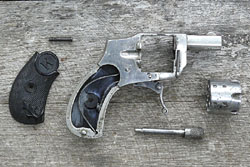 |
|
|
Kolb Baby Hammerless Revolver |
|
|
|
The gun shown here had both grips broken. I was able to repair them with black epoxy putty, which you can easily see on the rear portion of the left side grip. The gun must have been reasonably well made, as it still functions despite its age. This one is marked with serial number 475. However, Sellers states that duplicate serial numbers are often encountered. It seems that numbers regularly ran from 1 to 999, and then started again at 1.
Someone wrote to me inquiring if these guns had rifled barrels, as his gun has only vague traces of what might have been rifling. My gun is the same way. However, Sellars states clearly: “Both sizes were rifled; the 22 caliber with five grooves and the 32 caliber with six grooves, both right hand twist.”
Author’s Note: I only own a single example of the First Model small frame, so all my descriptions and other information come from Frank Sellers’ book. I’m not an expert on these guns by any means, but I’d be happy to help you identify your model if you will provide me with some photographs I can add to this article.
Please do not ask for help with parts or repairs. I don’t sell parts, nor do I know how to repair these guns. |
|
|
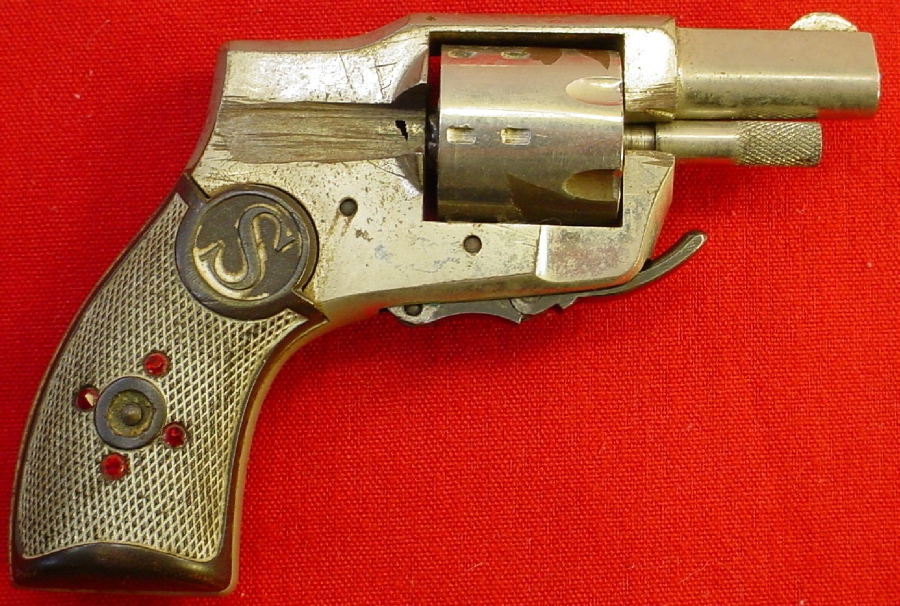
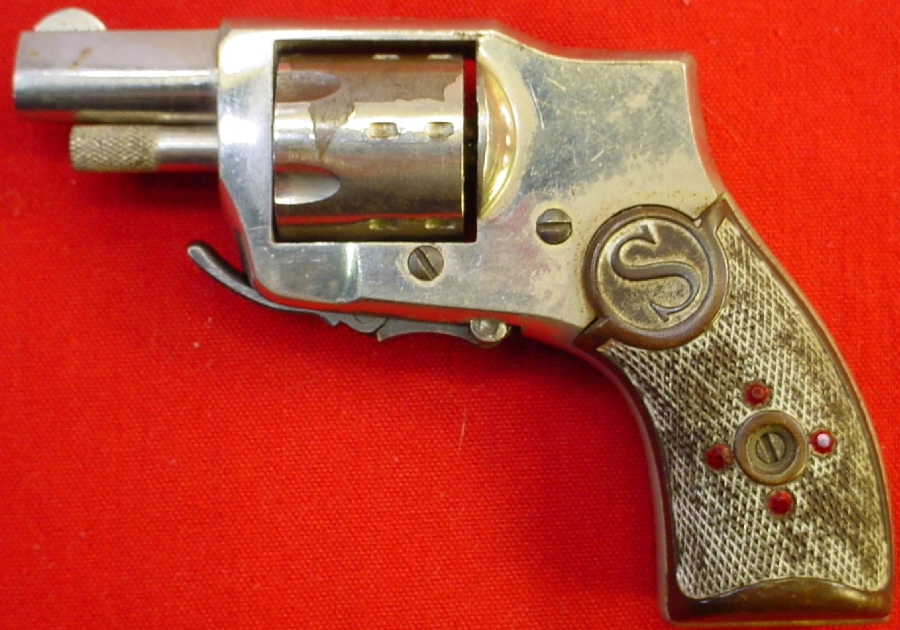
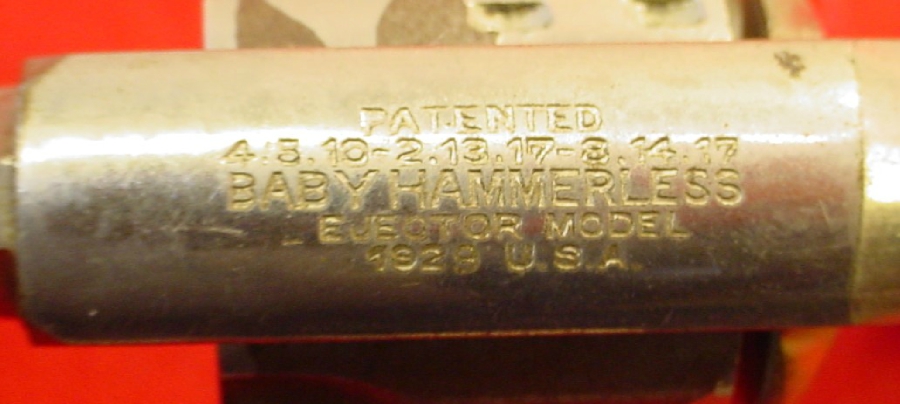
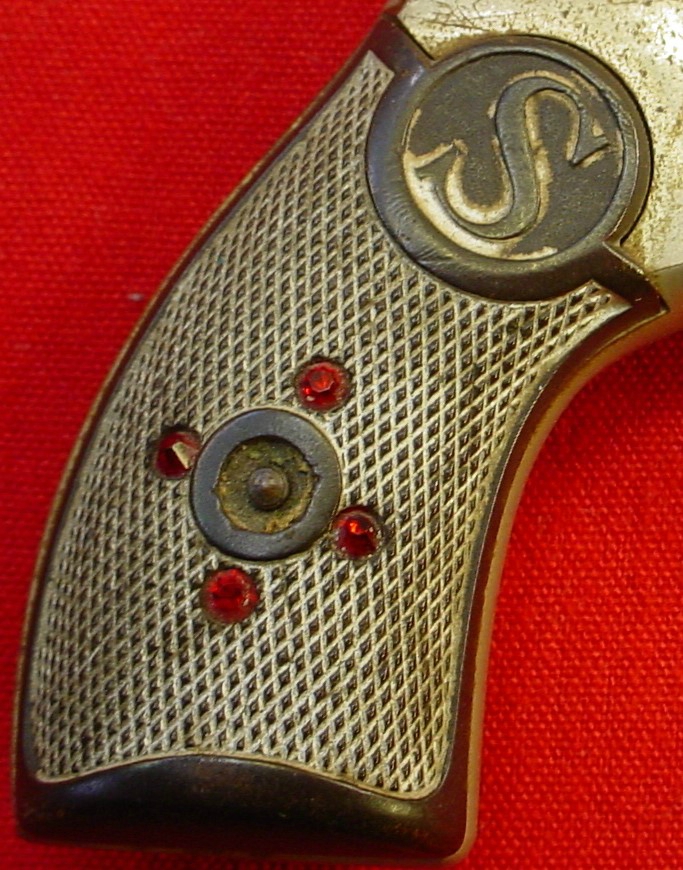
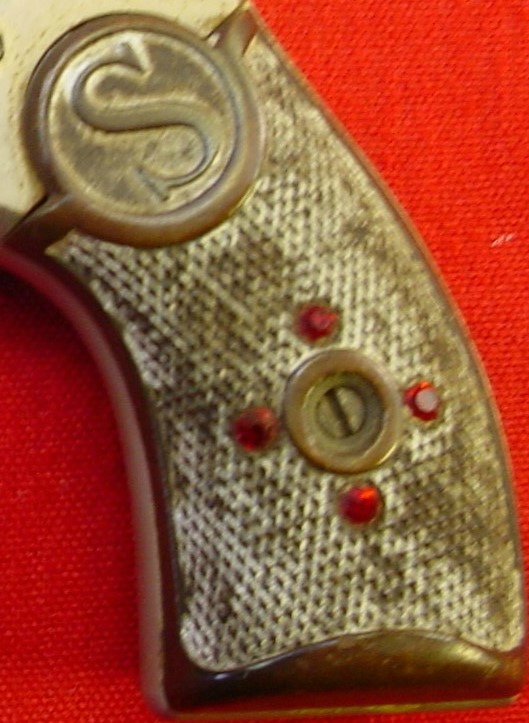
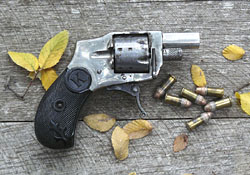
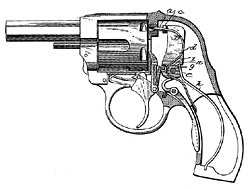
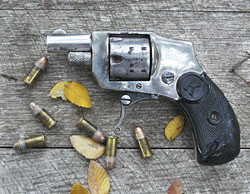




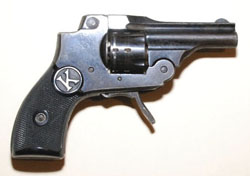

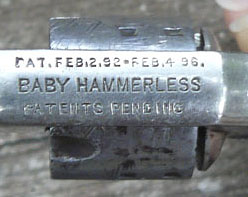
2 replies on “R. F. Sedgley, Inc. Baby Hammerless Ejector Model 1929. .22 Short”
What would be the value of the R.F. Segley model 1029?
I found one in my mothers Trunk where she saved many valuables.
I’m just curious
Thank you, Alpha Ott
Dear Alpha,
Sorry about not getting to you sooner. Now about your lucky find. I think that you have several options on this. You could take several good photos. Then send them to one of the better Gun Magazines like Guns & Ammo. They have a series of experts, who really have their stuff together.
Or you might try the brillant Ian McCollum on Youtubes Forgotten Weapons. Here is his point of contact – Forgotten Weapons
6281 N. Oracle #36270
Tucson, AZ 85704
One other thought from my feeble mind is to check with some of your better gun shops. But be wary as some folks are not shall as we should say trustworthy.
Grumpy
PS Two other brain farts is to try the NRA Gun Museum over in Virginia.
11250 Waples Mill Road
Fairfax, VA 22030
703-267-1600
Or the Cody Museum (307) 587-4771